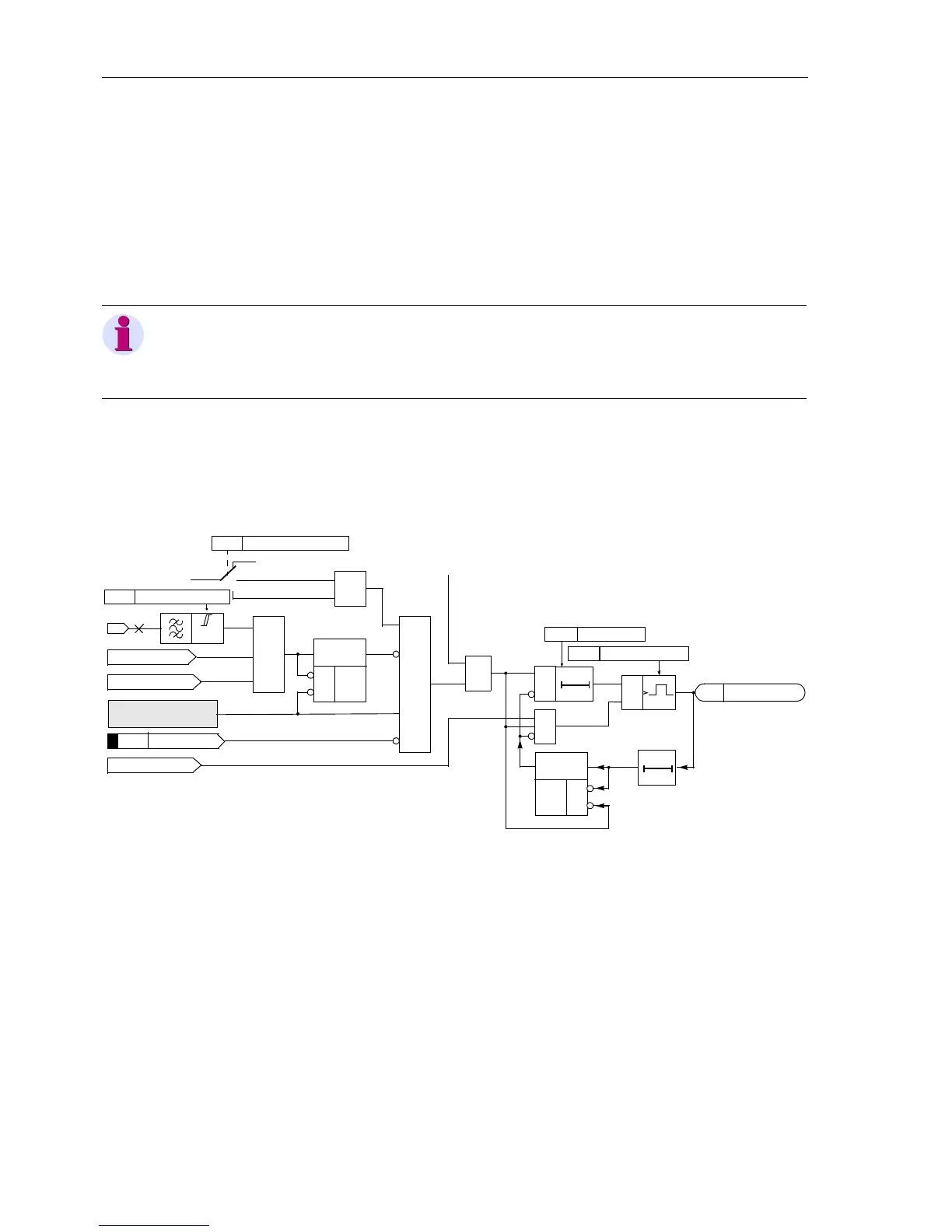Functions
6-150 7SA6 Manual
C53000-G1176-C156-2
If the conditions for an echo signal are met, a short delay Trip/Echo DELAY is ini-
tially activated. This delay is necessary to avoid transmission of the echo if the protec-
tion at the weak line end has a longer fault detection time during reverse faults or if it
picksup a little later due to unfavourablefault current distribution. If however the circuit
breaker at the non-feeding line end is open, this delay of the echo signal is not re-
quired. The echo delay time may then be bypassed. The circuit breaker switching
state is provided by the central information function control. (refer to Section 6.22).
The echo impulse is then transmitted (alarm output “
ECHO SIGNAL”), the duration of
which can be set with the parameter
Trip EXTENSION.
After transmission of the echo impulse, the transmission of a new echo is prevented
for at least 20 ms. This prevents from repetition of an echo after the line has been
switched off.
The echo function is not required for the blocking scheme, and is therefore ineffective.
Figure 6-86 Logic diagram of the echo function for the earth fault protection with teleprotection
Note:
The “ECHO SIGNAL” (F.No. 4246) must be separately assigned to the output relay
that is used for signal transmission, as it is not included in the transmit signal
“
EF Tele SEND”.
20 0
T
EF Pickup
&
S
R
Q
from receiving logic
(Fig. 6-79 or 6-82)
EF OFF/BLOCK
I
E
3I
0
3105 3IoMin Teleprot
≥1
&
>EF BlkEcho
2501
ECHO only
OFF
ECHO and TRIP
„1“
≥1
≥1
2502 Time DELAY
0
T
2503 Trip EXTENSION
&
Echo release by
the distance prot.
(ref.toFig.6-67
&
CB open (3pole)
≥1
&
S
R
Q
ECHO SIGNAL
1324
ms
4246
FCT Weak Infeed

